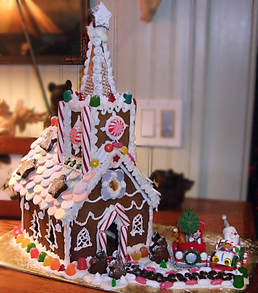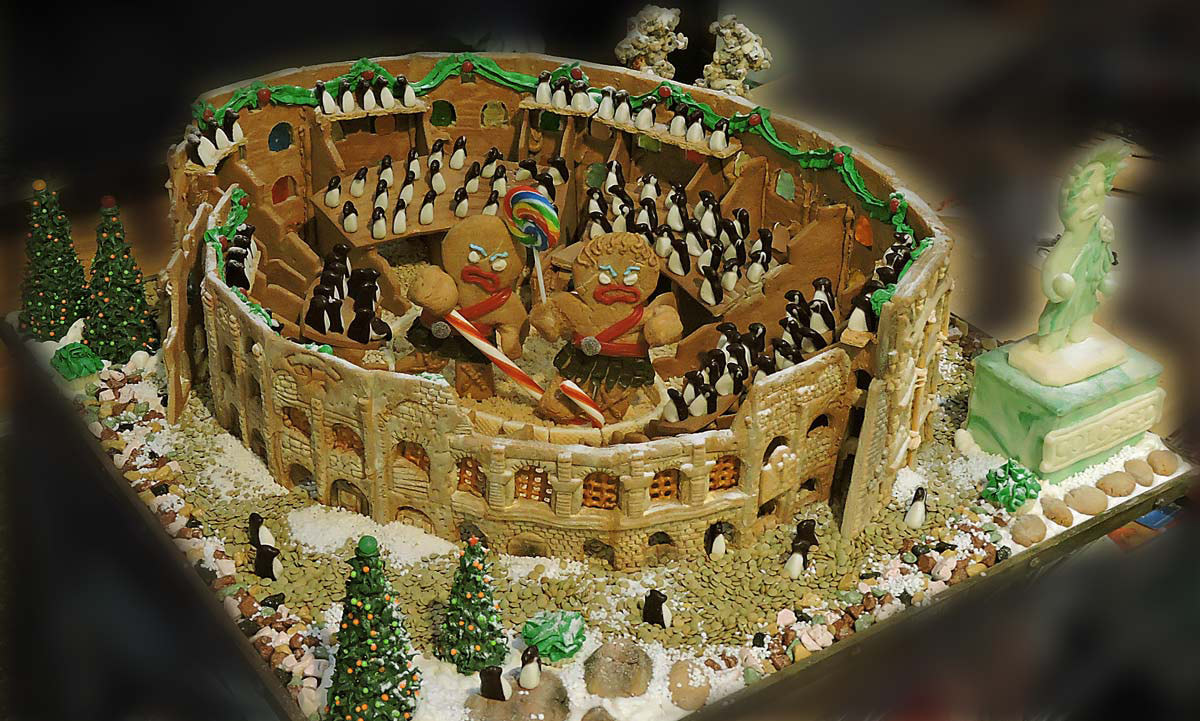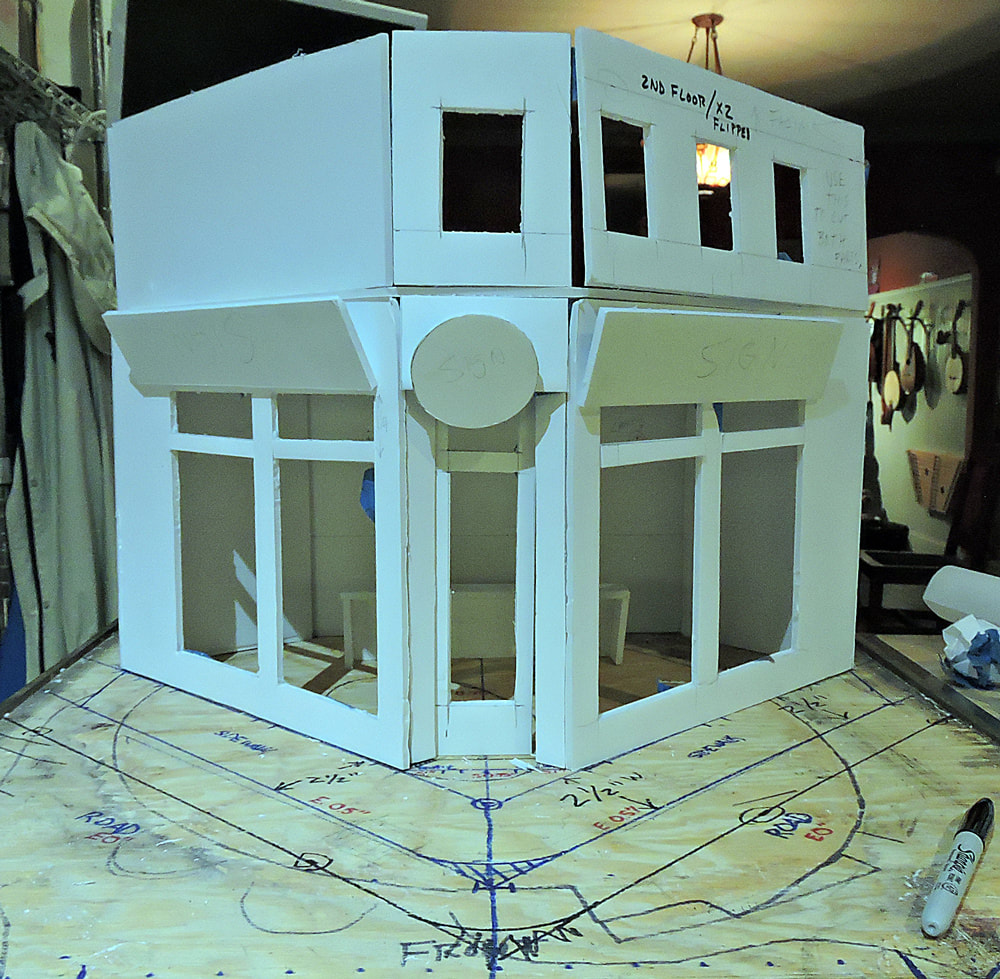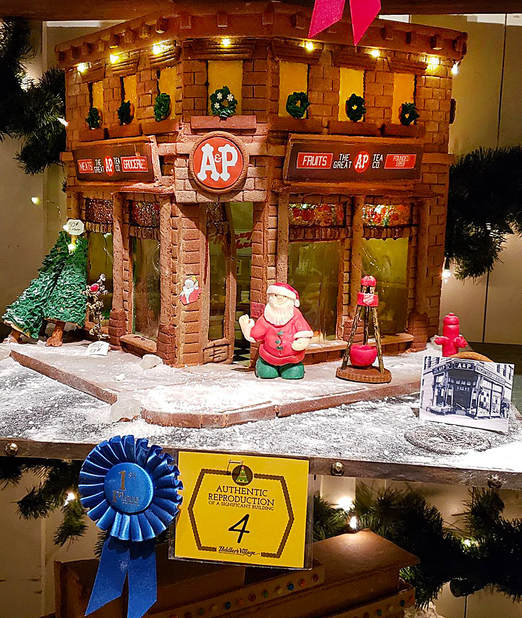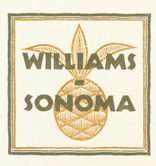 Making gingerbread and gingerbread houses have deep roots in history. Honey cakes can be traced to ancient Rome and culinary historians verify that ginger has been seasoning foodstuffs and drinks since antiquity. It is believed that the gingerbread as it appears today was first baked in Europe at the end of the 11th century, when returning crusaders brought back the custom of spicy bread from the Middle East. Ginger was not only tasty, but also had properties that helped preserve the bread something essential in the ancient world. According to a medieval legend, there was originally a fourth Magi who was to bring yet another gift to the infant Jesus--ginger. Sometime during his journey he fell ill and never got to Bethlehem, but a local Rabbi nursed him back to health. The Rabbi taught him that the name for Bethlehem in Hebrew actually meant House of Bread, and further told him of how he tasked his young students to make houses of bread to eat in preparation of their hopes for the coming of their Messiah. The Magus gave his chest full of ginger roots to the Rabbi and suggested adding ground-up ginger to the bread for flavor and preservation. The gingerbread house was born!  Gingerbread, as we know it today, descends from Medieval European culinary traditions. The spicy delight was also shaped into different forms by monks in Germany in the 13th century but quickly spread to other European countries. Medieval bakers used carved boards to create elaborate designs but in other places such as Calabria, Italy artisans hand shaped the spicy dough into elaborate designs, still popular today during holidays such as Easter and Christmas. Click HERE to read more about the art of Shaped Mostaccioli, the Calbrian Gingerbread. As you can see in the photos above, our gingerbread projects were modest at first, mostly a chance to begin the tradition for our son Lucas when he was a little boy. But then our passion for constructing gingerbread grew more complex and we started entering gingerbread house competions... Our 2018 Gingerbread Project: Lucas' Concept to Recreate an historic A&P Grocery Store For this year's project, I really wanted to do an Amalfi Coast hillside village complete with rugged mountain and multiple houses clinging to the cliffs, I was out-voted and we decided to build my son Lucas' concept for a 1930s vintage A&P grocery store--a timely choice since the A&P supermarket chain, the oldest in America, had recently closed all of its stores. Besides, to win, Lisa and Lucas both thought we should do a more "all-American" theme. The trouble with completing our project was that time was not on our side. For example, to create our gingerbread Colosseum it took about 6 weeks, from planning through baking all the components to finished construction. I don't know how time slipped away from us, but we only had about 10 days to plan and complete our A&P store, which would be difficult to impossible due to all the new techniques we were going to employ for the first time: melted candy windows, poured clear gelatin window "glass", creating miniature products and produce, fondant checkerboard tile floor and fondant asphalt paving, edible printed signage and timed electrical lighting! Well, somehow we did it! We delivered our project within 15 minutes of the delivery deadline! In the end, we won First Place in the Authentic Reproduction of a Significant Building category. I think we won based on to Lucas' concept and especially his skill in creating the brick textures and miniature details (fruitcake, fruit, watermelons, pumpkins, baguettes, a cheese board and much more) and his graphic design for all the signage! Oh, and of course, as usual, my wife Lisa helped with the preparation of the gingerbread dough and fondant. We Three make a great gingerbread team, don't you think? Buon Natale! --Jerry Finzi |
Archives
May 2024
Categories
All
|


